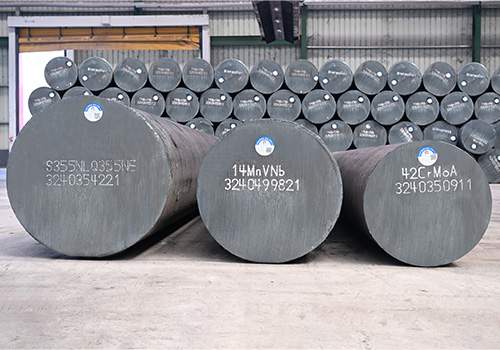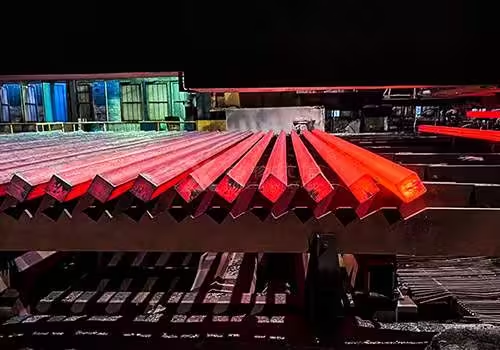
Alloy Steel 4140 vs. Other Steel Alloys: Key Differences
Introduction
Alloy steels are crucial in various industrial applications due to their unique properties and versatility. Among these, 4140 Alloy Steel stands out for its strength, toughness, and wear resistance. Understanding how Alloy Steel 4140 compares to other steel alloys can help engineers and manufacturers choose the right material for their specific needs. This article will delve into the key differences between 4140 Alloy Steel and other steel alloys, exploring their compositions, mechanical properties, and applications.

What is Alloy Steel 4140?
4140 Alloy Steel is a low-alloy steel that contains chromium, molybdenum, and manganese. This composition provides it with excellent hardness, strength, and resistance to wear. The typical chemical composition of Alloy Steel 4140 includes:
| Element | Percentage (%) |
|---|---|
| Carbon (C) | 0.38 – 0.43 |
| Chromium (Cr) | 0.90 – 1.20 |
| Molybdenum (Mo) | 0.15 – 0.25 |
| Manganese (Mn) | 0.75 – 1.00 |
These elements work together to enhance the performance of the steel, making it suitable for various demanding applications, such as in the automotive and aerospace industries.
Mechanical Properties of Alloy Steel 4140
The mechanical properties of Alloy Steel 4140 are a significant reason for its popularity. Below is a summary of key mechanical properties:
| Property | Value |
|---|---|
| Tensile Strength (MPa) | 655 – 880 |
| Yield Strength (MPa) | 415 – 620 |
| Hardness (HRC) | 28 – 35 (quenched) |
| Elongation (%) | 20 – 25 |
These properties make 4140 Alloy Steel ideal for applications where high strength and durability are required.
Comparison with Other Steel Alloys
Alloy Steel 4140 vs. Alloy Steel 4130
Alloy Steel 4130 is another low-alloy steel, similar to 4140 but with a lower carbon content. While both steels are used in similar applications, the higher carbon content in 4140 provides better wear resistance and higher strength.
Alloy Steel 4140 vs. Alloy Steel 8620
Alloy Steel 8620 contains nickel in addition to chromium and molybdenum, resulting in better hardenability. However, 4140 Alloy Steel typically offers superior strength and toughness, making it preferable for high-stress applications.
Alloy Steel 4140 vs. Stainless Steel 304
Stainless Steel 304 is known for its corrosion resistance rather than strength. While 4140 excels in applications requiring toughness and strength, 304 is favored in environments where corrosion resistance is crucial, such as food processing.
Applications of Alloy Steel 4140
4140 Alloy Steel is widely used across various industries due to its mechanical properties. Common applications include:
- Automotive Components: Gear shafts, crankshafts, and axles.
- Aerospace Parts: Landing gear and structural components.
- Oil and Gas Industry: Drill rods and casing.
Each of these applications leverages the high strength and wear resistance of 4140 Alloy Steel .
Advantages of Using Alloy Steel 4140
High Strength: Ideal for high-load applications.
Versatility: Can be heat treated for different hardness levels.
Cost-Effective: Offers a good balance of performance and price.
Machinability: Can be easily machined to precise specifications.
These advantages contribute to the widespread use of Alloy Steel 4140 in various sectors.
Disadvantages of Alloy Steel 4140

Despite its numerous advantages, there are some drawbacks to consider:
Susceptibility to Corrosion: Unlike stainless steels, 4140 Alloy Steel is not inherently corrosion-resistant.
Requires Heat Treatment: To achieve optimal mechanical properties, it often needs to be heat-treated.
Limited Ductility: While strong, it can be less ductile compared to other alloys, limiting its applications in some cases.
Conclusion
4140 Alloy Steel is a highly regarded material in the realm of alloy steels. Its unique composition and mechanical properties make it suitable for a wide range of applications. Compared to other steel alloys, it stands out for its strength and toughness, although it has its limitations. When selecting a material for a specific application, understanding the key differences between Alloy Steel 4140 and other steel alloys is essential.
FAQ
What are the primary uses of Alloy Steel 4140?
4140 Alloy Steel is primarily used in automotive, aerospace, and oil and gas applications due to its high strength and toughness.
How does Alloy Steel 4140 compare to stainless steel?
4140 Alloy Steel is stronger and tougher but lacks the corrosion resistance of stainless steel.
Can Alloy Steel 4140 be welded?
Yes, Alloy Steel 4140 can be welded, but preheating and post-weld heat treatment are often required to prevent cracking.
What is the heat treatment process for Alloy Steel 4140?
The heat treatment process typically involves quenching and tempering to achieve desired hardness and toughness.
Is Alloy Steel 4140 more expensive than other alloys?
While costs can vary, 4140 Alloy Steel often provides a good balance of performance and cost, making it a cost-effective choice for many applications.
By understanding the properties and applications of 4140 Alloy Steel in comparison to other steel alloys, manufacturers and engineers can make informed decisions that enhance performance and durability in their projects.






